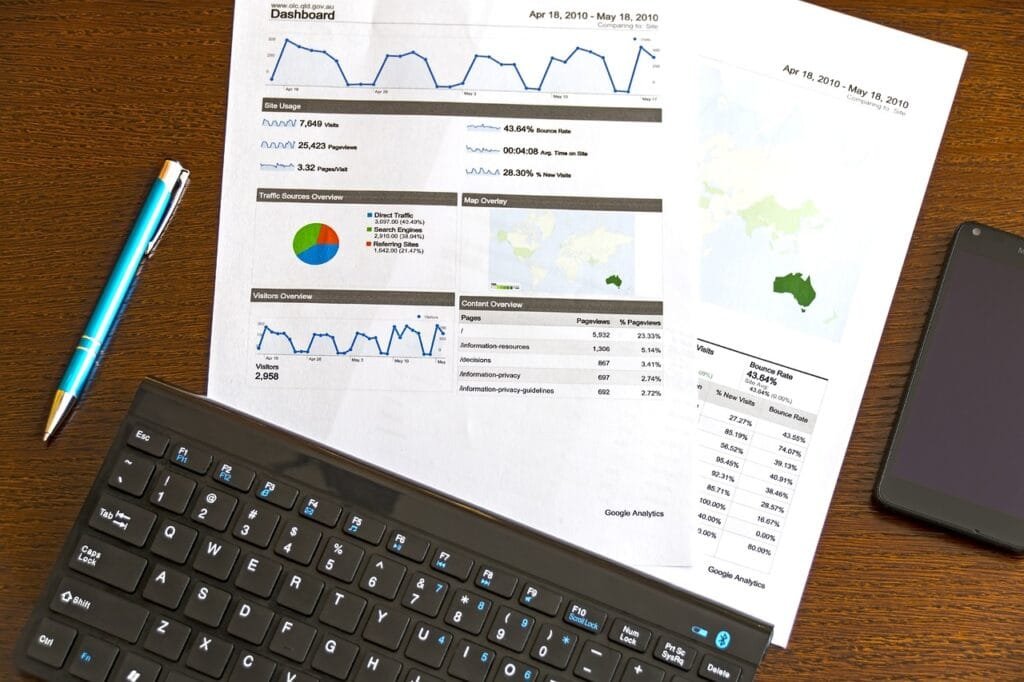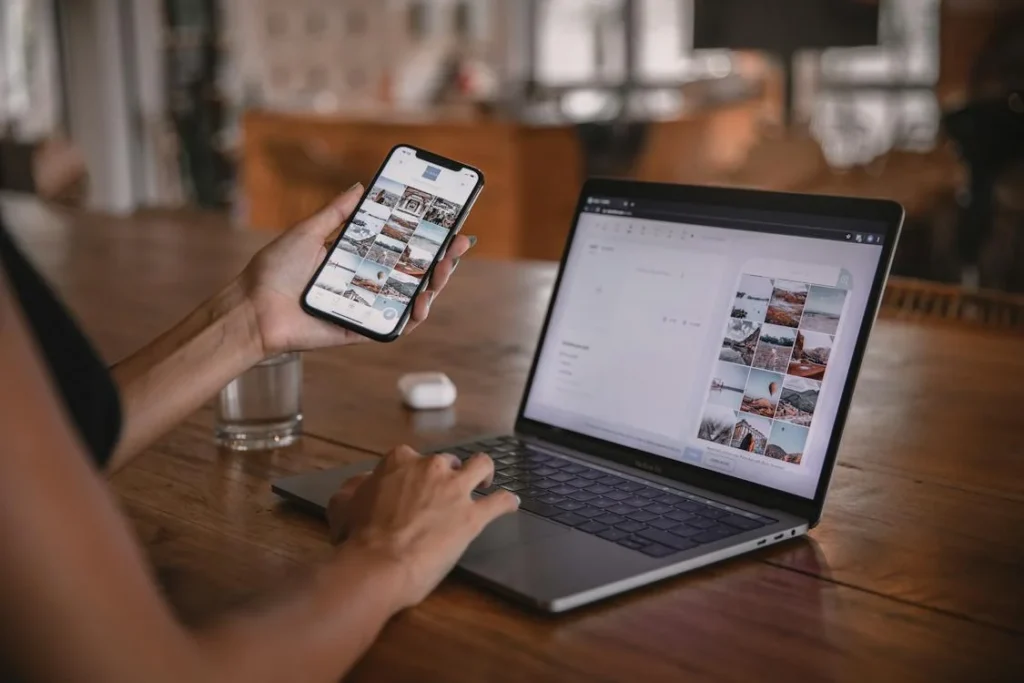(This Article has been revised, edited and added to, by Poulomi Chakraborty.)
In the digital age, where information flows in real-time and audiences have endless options at their fingertips, engaging them becomes a challenging yet essential task. Enter webinars, a powerful medium that offers businesses an intimate space to connect, share, and convert potential leads into loyal customers. But what really lies at the core of an impactful webinar? How does one bridge the gap between standard presentations and truly immersive digital experiences? This article dives deep into the anatomy of successful webinars, shedding light on the elements that captivate audiences and ensure your message isn’t just heard, but remembered.

The Anatomy of a Successful Webinar
Purpose-driven Content
Webinars that stand out don’t merely provide information; they deliver a message. Before you even start planning, ask yourself – What is the core objective of this session? Whether it’s to educate your audience on a new product, shed light on industry trends, or demonstrate your brand’s value, your content should mirror this purpose. Tailor your presentation to serve this goal, ensuring each slide, statistic, and story aligns with your central theme.
Audience Engagement
A monologue might work for theatrical performances, but webinars thrive on dialogue. Gone are the days when listeners passively absorbed information. Modern audiences seek interaction, validation, and a sense of involvement. By incorporating Q&A sessions, live polls, and real-time feedback mechanisms, you transform your webinar from a one-way lecture to a dynamic conversation, ensuring your audience remains active, attentive, and invested.
High-Quality Production
Your content might be gold, but if it’s delivered in a lackluster manner, it risks falling on deaf ears. Consider the sound quality: is your voice clear and free of disturbances? Evaluate your video: is the frame well-lit, with minimal distractions? Even small technical glitches can disrupt the flow and deter engagement. Investing in high-quality production equipment and software ensures your message is delivered crisply, cleanly, and professionally.
Advanced Audience Segmentation and Personalization
Start by going beyond basic audience identification. Use advanced analytics and CRM data to segment your audience based on their behaviors, preferences, and interaction history with your brand. This allows for hyper-personalized content that resonates on an individual level. For example, tailor your webinar content to address specific challenges faced by segments of your audience or to answer their most pressing questions.
Actionable Advice: Implement tools that track user behavior on your website or use AI-powered CRM solutions to segment your audience effectively. Use this information to customize your webinar topics, and even the examples or case studies you present, ensuring they are highly relevant to each segment.
Leveraging the Power of Storytelling with Data
Incorporate storytelling into your webinar, but elevate it by integrating data analytics. Use real-time data to tell a story that evolves. Showcasing live data during your webinar not only makes your content more compelling but also demonstrates your brand’s commitment to transparency and accuracy.
Actionable Advice: Prepare segments of your webinar where you can introduce live data feeds. For instance, if your startup offers a solution that tracks marketing performance, showcase a live dashboard during the webinar to illustrate real-time results clients could expect.
Interactive Product Demonstrations
Transform product demonstrations from a passive show-and-tell into an interactive experience. Allow attendees to choose what features they want to explore or problems they wish solved. This approach not only keeps the audience engaged but also provides them with a personalized understanding of your product’s value.
Actionable Advice: Utilize webinar tools that allow for audience input, such as polls or chat functions, to decide which product features to demonstrate next. Plan for different paths the demonstration could take, based on audience preferences, ensuring a smooth and engaging presentation.
Strategic Collaboration and Co-Branding
Collaborate with businesses that offer complementary services or products to host joint webinars. This can significantly broaden your reach and introduce your startup to new audiences. Additionally, it presents your brand as a thought leader that works alongside other innovators in the industry.
Actionable Advice: Identify potential partners who share your target audience but aren’t direct competitors. Approach them with a well-thought-out proposal for a co-hosted webinar that benefits both parties, outlining the topics to be covered and the value proposition for both audiences.
Post-Webinar Engagement Plans
Develop a comprehensive plan to engage attendees after the webinar. This could involve personalized follow-up emails with content tailored to their interests, exclusive offers, or invitations to one-on-one consultations. The goal is to convert interest into action, moving leads down the sales funnel.
Actionable Advice: Use the interaction data from the webinar (questions asked, polls answered, etc.) to segment attendees according to their interests and concerns. Tailor your follow-up communications to address these points directly, offering resources, product demos, or consultations as appropriate.
Continuous Learning and Optimization
After every webinar, conduct a thorough analysis to understand what worked and what didn’t. Use surveys, engagement metrics, and conversion data to inform your strategy for future webinars. Continuous improvement should be your mantra, aiming to enhance the quality and impact of each webinar you host.
Actionable Advice: Implement a robust analytics framework to measure the success of your webinars. Consider metrics such as attendance rates, engagement during the webinar (questions asked, polls participated in), and conversion rates post-webinar. Use this data to refine your approach, experimenting with different formats, content, and engagement strategies to discover what resonates most with your audience.

Pre-Webinar Preparations
Crafting a Compelling Webinar Theme and Title
The first step in your pre-webinar preparations should be to create a compelling theme and title that resonate with your target audience. The theme should not only be relevant to your audience’s interests and challenges but also encapsulate the unique value proposition of your webinar. Your title, on the other hand, needs to be attention-grabbing, clearly communicating the benefits of attending your webinar. Conducting keyword research and analyzing popular trends within your industry can provide insights into topics that have high engagement potential.
Content Research and Development
With a clear understanding of your audience’s needs, it’s time to delve into content creation. But rather than relying solely on intuition, lean on data. What are the latest market trends? Are there any recent studies or reports that can bolster your points? Seek feedback from past webinars or similar events. Which sections were hits, and which missed the mark? Infuse these insights into your content, ensuring it’s not just informative but also fresh, relevant, and resonating.
Strategic Scheduling and Timing
Determining the optimal date and time for your webinar is crucial for maximizing attendance. Consider the geographic distribution of your target audience and choose a timing that accommodates as many time zones as possible. Utilizing tools that analyze social media engagement patterns can offer valuable insights into when your audience is most active online. Additionally, avoiding scheduling conflicts with major industry events or holidays can prevent unnecessary competition for your audience’s attention.
Identifying Target Audience
Every successful marketing strategy begins with understanding its audience, and webinars are no exception. Before diving into content creation, take a step back to survey potential attendees. What are their pressing concerns? Which topics resonate most with them? What format do they prefer – a solo presentation, a panel, or an interview? By tailoring your webinar to cater to their specific needs and interests, you ensure relevance and increased attendance.
Building a Targeted Promotion Plan
A multi-channel promotion plan is essential for reaching your audience across various platforms. Start by identifying which channels your target audience frequents the most, such as LinkedIn for B2B audiences or Instagram for B2C. Tailor your promotional messages to fit the communication style of each platform while maintaining a cohesive campaign theme. Leveraging email marketing to send personalized invitations can significantly increase webinar registrations, especially when segmented lists are used to customize the message to different audience groups.
Developing Engaging and Interactive Content
While creating your webinar content, focus on interactivity and engagement. This goes beyond simply planning the presentation slides; it involves scripting moments for audience participation, such as live polls, Q&A sessions, and interactive exercises. Consider using storytelling techniques to present case studies or examples, making the content more relatable and memorable. Incorporating multimedia elements like videos or animations can also enhance the visual appeal of your webinar, keeping the audience engaged throughout the session.
Technical Rehearsal and Support Planning
A technical rehearsal is indispensable for identifying and mitigating any potential issues that could disrupt the webinar. This rehearsal should simulate the live event as closely as possible, including testing all multimedia elements and interactive features. Ensure that all presenters are comfortable with the technology and understand how to engage with the audience effectively. Planning for technical support during the webinar is also critical; have a dedicated team ready to address any technical issues attendees might encounter.
Personalizing the Attendee Experience
Personalization can significantly enhance the attendee experience, making your webinar stand out. From personalized email communications to acknowledging attendees by name during the session, small touches can make a big difference. Consider creating personalized content tracks or breakout sessions based on the attendees’ interests or industry segments, allowing for a more tailored and relevant experience.

Structuring Your Webinar for Maximum Engagement
Introduction Techniques
First impressions matter. The initial minutes of your webinar set the tone for the entire session. Start strong by teasing exciting content, establishing your credibility, and providing a roadmap of what’s to come. This not only captures attention but also sets clear expectations, ensuring attendees are hooked from the get-go.
Designing an Interactive Webinar Agenda
The foundation of a highly engaging webinar lies in its agenda, which should be crafted to keep the audience engaged through a mix of informative content, interactive sessions, and compelling storytelling. Begin by defining the key takeaways for your audience, ensuring they align with their interests and pain points. The agenda should then be structured to weave these takeaways into a narrative that guides the audience through a journey, from identifying a challenge to understanding its solution through your product or service. Incorporating interactive elements such as live polls, Q&A sessions, and real-time feedback opportunities at strategic points in this narrative can significantly enhance audience participation and investment in the content being presented.
Visual Aids
In our visually-driven world, relying solely on verbal communication can make your webinar feel flat. Integrate slides that underscore key points, use infographics to simplify complex data, or even showcase animations that explain processes in an engaging manner. If relevant, live demos offer a hands-on understanding of products or services, further enriching the learning experience.
Leveraging Engagement Triggers
To maximize engagement, identify and leverage triggers that prompt audience interaction. This involves understanding the psychological factors that drive your audience’s attention and engagement. Use storytelling to create moments of relatability, sparking curiosity or empathy that encourages participants to share their experiences or ask questions. Introduce challenges or problems that your audience faces, and use these as opportunities to engage through problem-solving exercises or brainstorming sessions. By strategically placing these triggers throughout your webinar, you can create a dynamic flow that keeps your audience actively involved and interested in the content.
Balancing Information Delivery and Interaction
Achieving the right balance between delivering information and facilitating interaction is crucial for maintaining engagement throughout the webinar. While the core of your webinar may be focused on imparting knowledge or sharing insights, dedicating specific segments to interaction can break the monotony and re-energize your audience. Transitioning smoothly between these segments requires careful planning and timing. Ensure that each informational section is followed by an opportunity for interaction, whether it be a quick poll to gauge opinions or a short Q&A session to clarify doubts. This rhythm encourages continuous participation and helps maintain a high level of energy among participants.
Segmentation and Pacing
A webinar, no matter how engaging, can become monotonous if it’s a continuous stream of information. Segment your content into clear, logical sections, providing short breaks or interactive elements in between. Monitor your pacing, ensuring you’re neither rushing through slides nor dragging on a single point for too long. The key is to maintain a rhythm that keeps your audience tuned in and eager for more.
Creating a Participatory Environment
Encouraging participation from the outset establishes a tone of inclusivity and engagement for your webinar. Set clear expectations for participation at the beginning, inviting attendees to share their thoughts and questions throughout the session. Use technology to your advantage by employing features like chat boxes, virtual hand raises, or breakout rooms for smaller group discussions. These tools not only facilitate interaction but also allow attendees to contribute to the conversation, making the webinar a collaborative experience. Recognizing and addressing participants by name when responding to their inputs can further personalize the experience and encourage continued engagement.
Ending with a Call to Action
Concluding your webinar with a strong call to action (CTA) is essential for translating engagement into tangible outcomes. Whether you’re aiming to convert leads into customers, encourage further learning through additional resources, or prompt an action related to your product or service, your CTA should be clear, compelling, and directly linked to the content of your webinar. Provide attendees with specific, actionable steps they can take immediately following the webinar, and make it easy for them to do so with links or instructions provided during the closing remarks. This not only maximizes the impact of your webinar but also leaves attendees with a clear sense of purpose and direction.

Content Strategies to Boost Engagement
Embedding Interactive Content for Real-Time Learning
The use of interactive content goes beyond polls and Q&As; it encompasses a broader range of tools and techniques designed to create a real-time learning environment. By embedding interactive elements such as live demos, interactive infographics, and real-time data analysis within your webinar, you transform passive viewers into active participants. This method encourages deeper understanding and retention of information, as attendees are not just hearing about a concept but are seeing it in action and interacting with it directly.
Utilizing Augmented Reality and Virtual Reality
Leverage emerging technologies like augmented reality (AR) and virtual reality (VR) to present your content in an immersive format. For instance, if your startup is in the product sector, use AR to allow attendees to visualize how your product works in a real-world setting. For services, VR can simulate scenarios where your service solves a problem or enhances a process. This high level of interactivity not only makes your webinar memorable but also provides a unique way for participants to understand the practical applications of your offerings.
Expert Collaborations
Bringing in a guest speaker or industry expert can significantly elevate your webinar’s credibility and appeal. This fresh perspective, coupled with their expertise, offers attendees additional value. Moreover, interviews or panel discussions introduce a dynamic element to the session, breaking the monotony and providing diverse insights on the topic. Collaborating with renowned figures in your field can also expand your webinar’s reach, as they’re likely to promote the event to their own followers.
Crafting Narrative-Driven Data Presentations
Data is a powerful tool in storytelling but presenting it in a narrative-driven way can significantly boost engagement. Transform your data into stories that relate directly to your audience’s experiences, challenges, and aspirations. Use visual storytelling techniques, such as animated graphs or storyboards, to guide your audience through the data in a way that builds a compelling narrative around your key messages. This approach not only makes your content more accessible but also more impactful, as it connects with attendees on an emotional level, reinforcing the relevance of your data to their personal or professional lives.
Personalization Through Predictive Analytics
Employ predictive analytics to tailor your webinar content to the preferences and behaviors of your attendees. By analyzing data from previous interactions, social media activity, or even registration forms, you can predict topics, questions, or concerns that are most likely to resonate with your audience. Use this insight to customize your webinar content, ensuring that it speaks directly to the interests and needs of your attendees. This level of personalization demonstrates a deep understanding of your audience, fostering a stronger connection and increasing engagement.
Strategic Storytelling for Brand Connection
Storytelling is a timeless tool for engagement, but its strategic use can further enhance its impact. Share stories that not only illustrate your points but also subtly convey the values and mission of your startup. These stories can be from your customers, highlighting how they have benefited from your product or service, or from your own journey, sharing the challenges and successes you’ve encountered. The key is to select stories that align with your brand identity and resonate with your audience’s aspirations, creating a powerful emotional connection that transcends the webinar itself.
Facilitating Community Building and Networking
Transform your webinar into a platform for community building and networking by facilitating connections among attendees. Encourage discussions and collaboration on shared challenges or interests, both during and after the webinar. Offer spaces, such as dedicated forums or social media groups, where participants can continue conversations, share insights, and support each other. This not only enhances the value of your webinar by extending its impact beyond the session itself but also positions your brand as a catalyst for professional growth and community engagement.
Actionable Takeaways
End your webinar on a high by providing attendees with actionable steps they can implement immediately. Whether it’s a toolkit, a checklist, additional resources, or simply a challenge, these tangible takeaways foster a sense of accomplishment. It signals that their time was well-spent, and they have something concrete to show for it, further solidifying the value your webinar provided.

Integrating Tech Tools for Interactivity
Leveraging AI for Enhanced Personalization and Engagement
Artificial Intelligence (AI) has the power to transform webinar engagement by offering personalized experiences at scale. AI can analyze attendee data, such as previous webinar interactions, engagement levels, and content preferences, to tailor the webinar content dynamically. This means that different segments of your audience could receive customized content feeds during the webinar based on their unique interests or behaviors.
AI-Powered Chatbots for Real-Time Interaction
Implement AI-powered chatbots as virtual assistants during your webinars. These chatbots can answer attendees’ questions in real-time, provide additional resources, or navigate them through the webinar platform. By offering immediate responses, chatbots enhance the attendee experience, ensuring that queries don’t go unanswered and that every participant feels heard and valued.
Advanced Analytics for Post-Webinar Insights
Beyond traditional engagement metrics, advanced analytics tools can delve into sentiment analysis, engagement heatmaps, and predictive behavior models. These insights allow you to understand not just how many people were engaged but how they felt about different parts of the webinar and what content was most effective in maintaining their interest.
Sentiment Analysis to Gauge Attendee Emotion
Utilize sentiment analysis to evaluate the emotional tone behind attendee comments and questions. This can provide a deeper understanding of how your content resonates with the audience on an emotional level, allowing you to adjust your messaging, tone, and content strategy for future webinars.
Immersive Technologies for a Virtual Experience
Embracing immersive technologies like Virtual Reality (VR) and Augmented Reality (AR) can create unique and engaging experiences for webinar attendees. For example, VR can transport attendees to a virtual environment that’s impossible in a physical setting, while AR can overlay digital information onto the real world, enhancing the educational aspect of your webinar.
Virtual Reality for Immersive Learning Environments
Consider hosting parts of your webinar in a VR setting where attendees can interact with each other and your content in a fully immersive 3D environment. This is particularly effective for product demonstrations or interactive learning sessions, where experiencing the environment or product can significantly enhance understanding and retention.
Seamless Integration with Social Media Platforms
Integrating your webinar directly with social media platforms can significantly boost engagement before, during, and after the event. Features like live tweeting or streaming parts of the webinar on platforms like Instagram or Facebook can attract a wider audience and encourage real-time interaction from attendees across different platforms.
Live Streaming to Extend Reach
Utilize live streaming to broadcast your webinar or its key segments on social media platforms. This not only extends the reach of your content but also invites participation from a broader audience. Encourage live viewers to join the full webinar for a more in-depth experience, leveraging the immediacy and reach of social media to enhance webinar attendance and engagement.
Promoting Your Webinar for Maximum Reach
Multi-Channel Promotion
The best content is futile without an audience. Utilize a mix of channels to promote your webinar. Email marketing, targeting past attendees or subscribers, can be an effective starting point. However, broadening your reach through social media promotions, paid ads, or even guest posts on industry blogs can attract a diverse audience. Crafting compelling promotional messages tailored to each platform can boost registrations.
We’ve recently begun to incorporate AI into our email marketing, using tools that help us optimize send times, subject lines, and content recommendations. It’s still early days, but we’re excited about the potential of AI to turn our good email campaigns into great ones.
Diego Cardini
Founder- The Drum Ninja
Harnessing the Power of Content Marketing
Content marketing is a powerful tool for promoting webinars. By creating valuable and relevant content that addresses the interests and challenges of your target audience, you can attract potential webinar attendees naturally. This involves crafting blog posts, infographics, and short videos that tie into the theme of your webinar, offering a taste of what attendees can expect to learn. Distributing this content across your website, social media channels, and email newsletters not only boosts visibility for your webinar but also establishes your brand as a thought leader in your industry.
Strategic Guest Blogging
Partner with popular industry blogs or websites to publish guest posts related to your webinar’s topic. This collaboration allows you to tap into established audiences and draw attention to your webinar. In your guest posts, provide valuable insights and include a call-to-action (CTA) inviting readers to register for your webinar for more in-depth information.
Utilizing Influencer Marketing
Influencer marketing can significantly amplify your webinar’s reach. Identify influencers within your industry who share your target audience and collaborate with them to promote your webinar. Influencers can share your webinar details with their followers through social media posts, stories, or even dedicated content, such as an interview or discussion about the webinar’s topic. This not only extends your reach but also lends credibility to your webinar, as endorsements from respected industry figures can drive registrations.
Co-Hosting with Industry Influencers
Consider co-hosting your webinar with an influencer or industry expert. This partnership not only enriches your webinar content with their expertise but also leverages their audience for greater reach. Ensure that the collaboration is mutually beneficial by offering value that the influencer can share with their audience, such as exclusive insights or early access to resources.
Engaging Landing Pages
Your promotional efforts should lead potential attendees to a landing page crafted to convert. Ensure this page clearly communicates the webinar’s value, the topics covered, and any guest speakers. An intuitive design, coupled with compelling copy and a clear call-to-action (CTA), can optimize sign-ups.
Teasers and Sneak Peeks
To pique interest and create anticipation, offer snippets or highlights of what attendees can expect. Short teaser videos, infographics, or even quotes from your content can be shared across promotional channels, sparking curiosity and increasing registrations.
Leveraging Email Segmentation for Personalized Invitations
Email marketing remains one of the most effective channels for webinar promotion. However, generic blasts can lead to low engagement. Instead, segment your email list based on subscribers’ interests, previous webinar attendance, and engagement level. Tailor your email invitations to each segment, highlighting aspects of the webinar that are most relevant to them. Personalized emails increase the likelihood of registration, as recipients feel that the webinar addresses their specific needs or interests.
Automated Email Sequences
Develop an automated email sequence leading up to the webinar. Start with an invitation, followed by reminder emails that provide more information about the webinar’s value and what attendees can expect. After the webinar, send follow-up emails with a link to the recording and additional resources. This sequence keeps your webinar top of mind and encourages attendance and post-event engagement.
Integrating Retargeting Campaigns
Retargeting campaigns are a strategic way to remind individuals who have shown interest in your webinar but haven’t registered yet. Using retargeting ads on social media platforms and Google Display Network, you can keep your webinar visible to these potential attendees. Craft your retargeting ads to address common objections or highlight compelling benefits of attending your webinar.
Leveraging Social Proof
Social proof, such as testimonials from past webinar attendees or endorsements from industry experts, can boost confidence in your webinar’s value. Share these testimonials on your website, in your email marketing, and across social media channels. Seeing positive feedback from peers can motivate potential attendees to register, as it reduces uncertainty about the quality and relevance of your webinar.
Post-Webinar Strategies for Sustained Engagement
Follow-Up Emails
The end of your webinar doesn’t mean the end of engagement with your attendees. A strategically crafted follow-up email can deepen the connection. Start by thanking them for their time and participation. Attach resources discussed during the webinar, or provide a link to the recorded session, allowing them to revisit the content. Incorporate a feedback form or survey in the email to understand their experience and gather insights for future sessions. Remember, the more value you provide post-webinar, the more likely attendees will return for future sessions.
On-Demand Access
People’s schedules are unpredictable, and even those who registered with the utmost intent might miss the live session. Offering on-demand access ensures that your content remains accessible and continues to generate value. Hosting the recorded webinar on your website or a dedicated platform can drive continuous traffic and engagement. Plus, this creates an evergreen resource, useful for those who might discover your content weeks or even months later.
Repurposing Content
Your webinar is a goldmine of content waiting to be leveraged in various formats. Extract key insights and turn them into blog posts or articles, enhancing your content marketing strategy. Short clips highlighting crucial points can be shared on social media platforms, directing traffic to the full webinar. Transform data or insights from your session into infographics, making them easily shareable and digestible. The possibilities are endless; by repurposing, you amplify the reach and longevity of your content.
Engagement Analytics
Understanding attendee behavior during and after the webinar is crucial for refining your strategy. Delve into metrics like the average viewing time, points of peak engagement, and moments when attendees might’ve dropped off. This data, combined with feedback, can highlight areas of improvement. For instance, if there’s a consistent drop in viewership halfway, perhaps it’s time to reevaluate your content segmentation or pacing. Analytics serves as a roadmap, guiding enhancements for subsequent webinars.
Wrapping it Up
In the digital age, webinars have emerged as a powerful tool for businesses and professionals to share knowledge, connect with a global audience, and establish thought leadership. Crafting an engaging webinar, however, goes beyond just presenting information. It’s a blend of meticulous preparation, audience-centric content, strategic promotion, and sustained post-webinar engagement.
Remember, the ultimate goal is to provide genuine value to your attendees. From the moment they register to the follow-up email they receive after the session, every touchpoint should be designed with their interests and needs in mind. Prioritize interaction and engagement, integrating storytelling, expert insights, and actionable takeaways. Leverage technology to its fullest, ensuring seamless delivery and maximizing interactive opportunities. Lastly, never stop learning and iterating. Feedback and analytics are invaluable, pointing the way to constant improvement.
As webinars continue to evolve, staying abreast of best practices, technological advancements, and audience preferences is essential. But at the heart of it all lies a simple truth: genuine engagement stems from authentic content that resonates. Prioritize your audience, and success will inevitably follow.
Read Next:





















